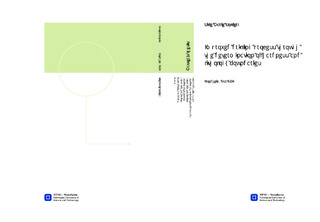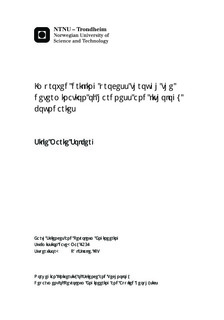| dc.description.abstract | The main objective of drilling a well is the potential economic profit. The total cost of a drilling operation result from a complex interplay of many factors (Graham and Muench, 1959). Work that can optimize some of these factors is desirable, and the need for information that can eliminate unfortunate incidents resulting in increased operational time and make the operation more efficient is constant. Well cemented layers and the composition of the cemented materials are the main causes of hard stringers. Hard stringers may lead to severe downhole problems like washouts, severe local doglegs and keyseats. Such downhole problems are often related to the unexpected appearance of hard stringers and may cause the drill string to stick and result in lost time. Hard and soft stringers may be detected through real-time drilling data. This is achieved by comparing different drilling parameters, like rotary speed (RPM), weight on bit (WOB) and block position (BPOS). A decrease in RPM followed by an increase in WOB indicates hard formations. However, manual analyses are time consuming and inefficient. A modified and improved version of the hardness detection program previously developed by Solberg (2011) is presented in present thesis. The model is based on a simplified version of the rate of penetration (ROP) equation proposed by Bourgoyne and Young (1986). Drillability is the desirable result from the equation, as drillability is the inverse of hardness. Not all the functional relations that initially are part of the ROP equation have been assumed relevant for the detection of soft and hard stringers. Some of them alter only gradually, either with depth or as the drilling operation progresses, and do not affect the sudden change in drillability as the well is being drilled. WOB, RPM and ROP (ΔBPOS/Δt) are drilling parameters chosen as relevant for present work. They are obtained through real-time drilling data and utilized in the calculations of drillability. Exponents related to the WOB and the RPM functions will frequently vary with the hardness in the formation. However, frequent manipulation of the exponents is difficult to achieve and only one soft and one hard formation exponent related to each exponent type have been applied. The final result shows a plot of hardness variation with depth. The plot has been proved to correlate well with experienced hard stringers stated in the Final Well Report. The program has been proved to be able to detect lithology transitions. The boundaries of particularly the Utsira Fm are evident on the hardness curve. The detection of Utsira Fm is enhanced by both gamma ray and sonic log from the same formation in wells nearby. Correlations between the two logs and hardness have been established. However, due to absence of sonic and gamma ray data from Well 0, the trustworthiness of the establishment is hard to evaluate. | nb_NO |

